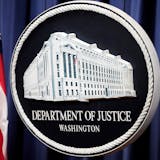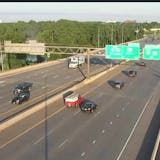HUDSON, Wis. — The stacks of campaign lawn signs at political party headquarters in this western Wisconsin city are being readied to go: Donald Trump for the Republicans and Joe Biden for the Democrats.
Already considered a presidential swing state in recent elections — one that Trump and Biden have each won by little more than 20,000 votes — Minnesota’s neighbor to the east is considered one of just a handful of battleground states in the 2024 presidential election.
Very soon, it will feel like it, party leaders say. On Tuesday, Wisconsin voters head to the polls to cast ballots in the all-but-decided presidential primary, plus local races and referenda and two state constitution questions.
Then the parties turn their attention to national and state issues that will dominate the discussion until November.
“I think there’s gonna be a lot of money spent,” St. Croix County Democratic Party Chair Paul Hambleton said of the expected political ads, mailers and other get-out-the vote efforts.
County Republican Chair Matthew Rust agreed. In the second showdown between Trump and Biden, he said, “a lot of people are thinking Wisconsin could be the one that actually determines for sure.”
A big swing state
Of course, a presidential election is fought and won in every state in the country. But from a technical standpoint, whether Biden or Trump wins the presidency will likely to come down to just a few truly in play in the Electoral College.
Wisconsin is one of just four states listed as toss-ups by Sabato’s Crystal Ball, the nonpartisan newsletter from the University of Virginia’s Center for Politics. The others are Arizona, Georgia and Nevada.



